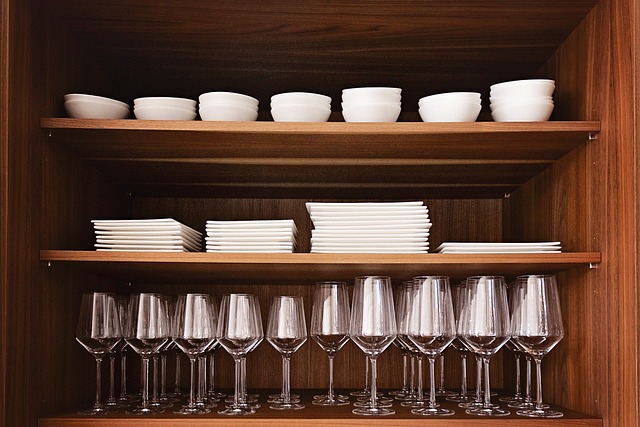Smart Kitchen Island Alternatives for Small Spaces
No room for a full island? Consider alternatives like rolling carts, breakfast bars, or butcher blocks. These flexible kitchen additions offer storage, prep space, and seating without the footprint of traditional islands—perfect for compact kitchens.

What Makes a Kitchen Island Alternative Effective?
An effective kitchen island alternative combines functionality with flexibility, addressing the core needs that drive homeowners to consider islands in the first place. The best alternatives offer multiple purposes: additional counter space for meal preparation, storage solutions for kitchen essentials, and often seating options for quick meals or socialising.
Mobility stands as a key differentiator for many alternatives. Unlike permanent installations, rolling carts and portable units can be repositioned based on your immediate needs, tucked away during large gatherings, or moved entirely for deep cleaning. The most effective alternatives also complement your existing kitchen layout rather than competing with it, seamlessly integrating with your current workflow patterns.
Size proportionality matters significantly. An effective alternative should provide meaningful additional space without creating bottlenecks in traffic flow. Generally, maintaining at least 90 centimetres of clearance around moveable units ensures comfortable navigation while maximising the functional benefits.
Which Kitchen Island Alternatives Work Best?
Rolling kitchen carts top the list for versatility and affordability. These wheeled units typically feature multiple shelves, drawers, and often include a towel bar or spice rack. Many models incorporate a butcher block or stainless steel top suitable for food preparation, while the mobility allows easy repositioning from prep area to serving station.
Breakfast bars attached to existing countertops or walls provide excellent space-saving solutions. These installations extend your current workspace while creating casual dining spots that work particularly well in galley kitchens or open-plan layouts. Wall-mounted drop-leaf tables offer similar benefits with the added advantage of folding away completely when not needed.
Portable butcher blocks and baker’s racks deliver focused functionality for serious home cooks. These robust alternatives often feature heavy-duty construction suitable for intensive food preparation, while their compact footprint makes them ideal for smaller kitchens. Some models include built-in storage for cutting boards, knives, and frequently used ingredients.
Console tables adapted for kitchen use present an often-overlooked alternative. When positioned strategically, these pieces provide additional counter space and storage while maintaining a more residential, less commercial appearance than traditional kitchen islands.
What Storage Solutions Do Kitchen Island Alternatives Offer?
Kitchen island alternatives excel in providing targeted storage solutions that often surpass traditional islands in efficiency and accessibility. Rolling carts typically incorporate multiple storage zones: enclosed cabinets for items you prefer hidden, open shelving for frequently accessed dishes or cookbooks, and specialised racks for wine bottles, cutting boards, or kitchen towels.
Drawer configurations in portable alternatives often feature better organisation systems than built-in islands. Many models include adjustable dividers, utensil organisers, and pull-out trays that maximise every centimetre of available space. The mobility advantage means you can position storage exactly where you need it during different cooking tasks.
Breakfast bars and wall-mounted solutions frequently incorporate overhead storage, utilising vertical space that traditional islands cannot access. Floating shelves, hanging pot racks, and magnetic strips for knives can be integrated with these installations, creating comprehensive storage ecosystems that work particularly well in compact kitchens.
Specialised storage features in alternatives often address specific pain points. Wine storage, spice organisation, trash bin compartments, and appliance garages are commonly available in portable units, allowing you to customise your additional storage based on your actual cooking and entertaining patterns rather than generic island configurations.
| Alternative Type | Price Range (AUD) | Key Features | Best For |
|---|---|---|---|
| Rolling Kitchen Cart | $150 - $800 | Mobile, multiple storage levels, prep surface | Renters, flexible layouts |
| Wall-Mounted Breakfast Bar | $200 - $1,200 | Space-saving, integrated seating, permanent | Small kitchens, dining needs |
| Portable Butcher Block | $300 - $1,500 | Heavy-duty prep surface, focused functionality | Serious cooking, food prep |
| Console Table Adaptation | $250 - $1,000 | Residential appearance, dual-purpose | Open-plan homes, style-conscious |
Prices, rates, or cost estimates mentioned in this article are based on the latest available information but may change over time. Independent research is advised before making financial decisions.
The investment in kitchen island alternatives typically delivers excellent value compared to full island installations, which can cost several thousand dollars including cabinetry, countertops, and electrical work. Most alternatives require no permanent modifications to your kitchen, preserving your options for future renovations while providing immediate functional benefits.
Installation complexity varies significantly among alternatives. Rolling carts arrive ready to use, while breakfast bars might require professional installation for proper wall mounting and electrical connections if lighting is included. Consider ongoing maintenance requirements as well—portable units may need periodic tightening of hardware due to regular movement, while fixed alternatives generally require minimal upkeep.
Kitchen island alternatives prove that limited space doesn’t mean limited functionality. By carefully selecting solutions that match your specific needs, cooking patterns, and spatial constraints, you can achieve the practical benefits of additional counter space, storage, and seating without the commitment or expense of traditional island installation. The flexibility these alternatives provide often exceeds that of permanent installations, allowing your kitchen setup to evolve with your changing lifestyle and entertaining needs.




